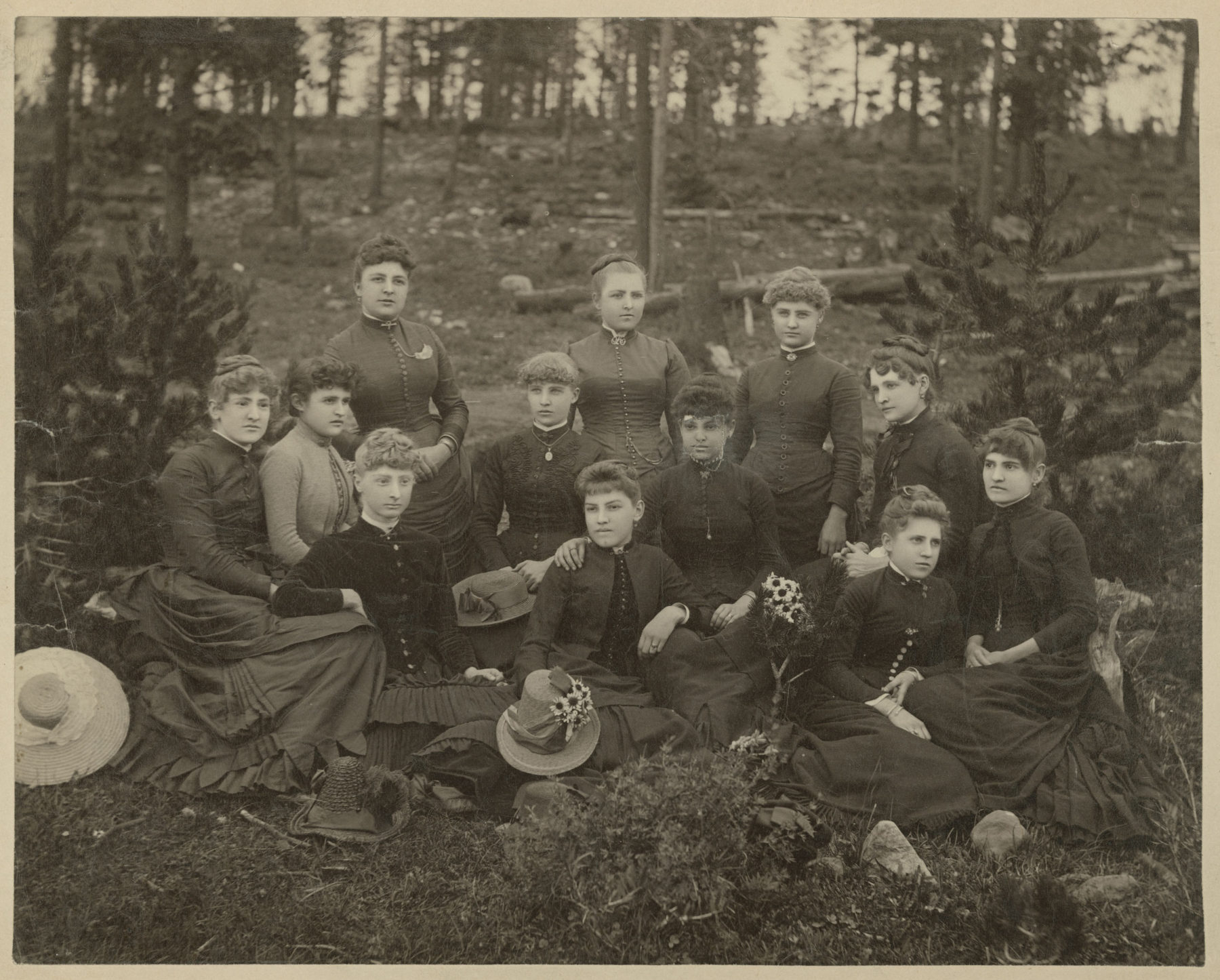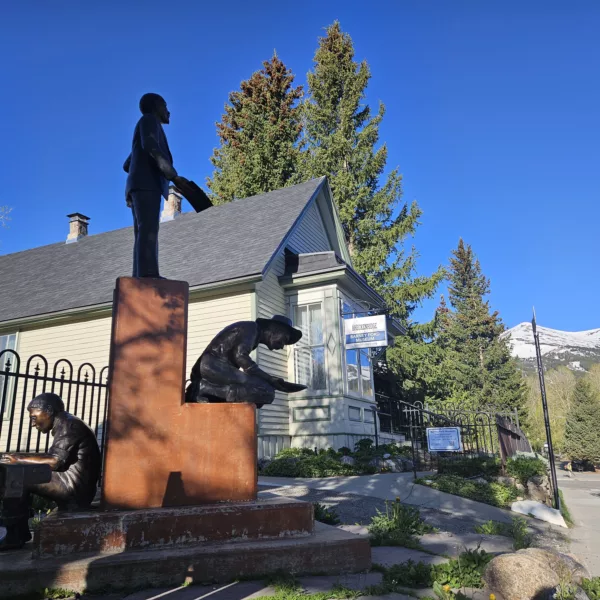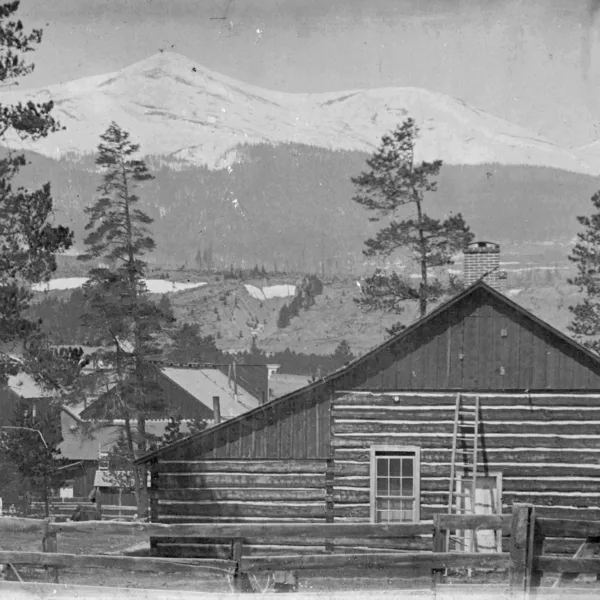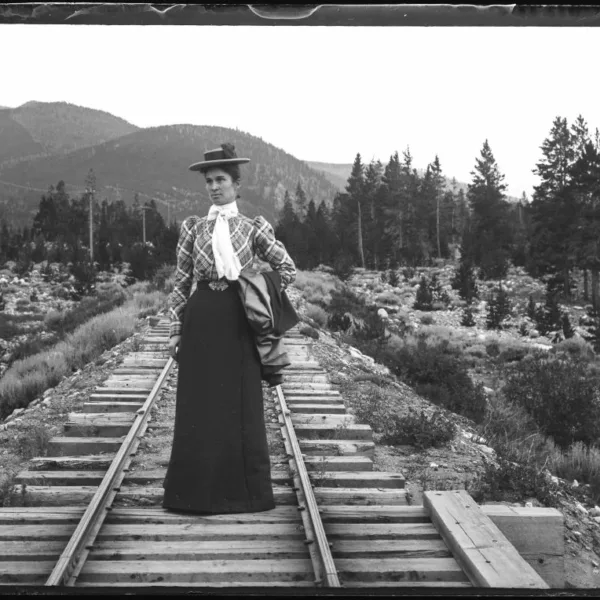The Women of Breckenridge
April 08, 2022 | Category: Breckenridge History
 Who were the women who came to Breckenridge in the 1880s? Where did they come from? Did they willingly make the trek to Breckenridge? What did they find when they arrived? Census data and diaries tell the story.
Who were the women who came to Breckenridge in the 1880s? Where did they come from? Did they willingly make the trek to Breckenridge? What did they find when they arrived? Census data and diaries tell the story.
Push and pull factors influenced the decision to come west: poverty, the promise of prosperity, climate, marriage, free land, and the severe depression of 1857, all pushed people from “home” and pulled them to Colorado. In a family, the husband usually made the first overture to head west. Women reacted with a variety of reactions: agreement, disagreement; reluctance, eagerness; fear, enthusiasm; happiness, sadness; hopefulness, resignation; and often complete surprise.
For most women, though, leaving family and friends proved quite difficult. Whether they headed west willingly or not, most women never stopped looking back to those left behind.
The majority of the women coming to Summit County in the 1880s had lived in four states: Pennsylvania, where the depression of 1857 hit particularly hard, Ohio, New York and Illinois. Of those born outside of the United States, the largest number by far immigrated from Wales, Cornwall, England, Canada, Ireland, Scotland and the German states. Other countries represented included Sweden, Norway, Switzerland, France, Denmark, Holland, Austria, Russia, and Italy.
One women of Chinese heritage lived in Breckenridge in 1885. As a rule, Chinese men did not bring their families. The vast majority of Chinese women had been brought to the United States, sometimes as early as their infancy, to serve the men as prostitutes. Because Chinese men would not marry non-Chinese women, many of the prostitutes became wives of much older Chinese men. The one Chinese woman living in Breckenridge, Lee Cum, age 25, had married Lee Chin, age 52. Both worked in a laundry. Had she been a prostitute forced to marry the much older man?
Men greatly outnumbered women in Breckenridge.
- 1870: Males 139, Females 26
- 1880: Males 1371, Females 287
- 1885: Males 622, Females 335
But In the male-dominated society, women had an influence far beyond what might be expected from so few. When women arrived in greater numbers, they targeted drinking, gambling, and sexual activities for reform. To overcome the lure of these activities, women founded churches, libraries, schools, social cubs, and hospitals. They gave parties and arranged dinners and balls.
Although the women worked hard to influence the town, they never really had a major impact on gambling, drinking and prostitution. Led by clergy, they generally embraced the temperance movement of the mid-1880s; but the Victorian values espoused by the women clashed with an economic enterprise that provided a stable tax base and employed numerous people.
Enthusiastic audiences attended the temperance meetings held in the Grand Army of the Republic Hall and in churches. The newspaper editor expressed sympathy for the movement but reminded readers that saloon keepers and proprietors bought licenses to operate, paid taxes, and supported civic projects. Saloon employees spent their wages at local businesses. Saloon keepers and proprietors had been elected school superintendent, sheriff, town treasurer, and mayor.
Women faced limited employment opportunities, although women’s “work” was in high demand. They cooked, cleaned, sewed, washed, ironed and took in boarders. They could perform these services for husband and family or they could be part of the action–perhaps owning a boarding house or other business with women employees. Some owned stores and shops: stationery store, millinery shop, dress making shop, general merchandise store. Others worked as clerks in stores or offices. Some maintained professional careers. Numerous women in Breckenridge taught children how to play the piano and other musical instruments. This was a time when mothers felt that their daughters needed to play the piano in order to find a “suitable” husband. When Scott McClarren, proprietor of the Cabinet Saloon, died, his wife converted the business into the highly successful Metropolitan Dining Room. Minnie Bruch opened a candy and fruit store next door to her husband’s barber shop. She advertised the finest candy and fruit and largest selection of Valentines in the county. Katherine Sisler Nolan ran her husband’s huge placer mining enterprise in French Gulch after his death. The newspaper editor recognized her as an astute businesswoman: “the only lady mine owner in Breckenridge district who personally superintends the operations of the property.”
Few women entered the medical profession, but on August 1, 1899, the newspaper advertised that newly arrived Miss Kate De P. Moville, a “trained dentist,” was “prepared and competent to do everything in the dental line.” She located her office in the Remine House, owned and operated by Fannie Remine.
Women generally could find employment as teachers–especially single women–and often immediately after graduation from high school, as did Annie Sisler and Fannie Remine. People felt that teaching suited women as it was a natural extension of their role as mother. In addition, women would not be deterred by low wages. Generally the unmarried teachers boarded with a family rather than live in a place of their own and sometimes had to perform household chores a part of their employment. Area residents watched them constantly for improper behavior. To become a teacher, one simply took the teacher’s exam offered four times a year by the school superintendent. The newspaper editor announced the results.
For those widowed or divorced and supporting children, opportunities for employment might be limited. The census recorded cook, laundress, “water” [waiter] in a hotel and washer woman. For some women with children, the enumerator listed no means of support.
Because of the dearth of social agencies to help those facing poverty, widowhood, divorce, neglect, and depression, women organized their own solutions. Whether informally or through organizations such as the Women of Woodcraft or Rebekahs, they actively helped where they could.
Those with financial means, tried to make their homes meet the domestic standards of the day. They covered walls and ceilings with newspapers to retain heat and added wallpaper if finances permitted. Old rags might become rugs; scraps of fabric could be made into quilts.
As a way to stay connected with other women, they established informal clubs: kitchen club, literary club, sewing club, debating club, taffy club, glee cub, even a club for those coming from Pennsylvania–just to name a few. They joined formal organizations such as the Order of the Eastern Star, the Rebekah Lodge, Women of Woodcraft, and the Degree of Pocahontas.
Etiquette ruled the lives of those in the middle and upper classes. They exchanged ornate calling cards during formal visits; they served tea and invited special guests; they walked slowly no matter what the weather might be or how snowy, icy or muddy the sidewalk. Dinner parties occurred weekly in lavishly decorated homes. Books prescribed proper etiquette for almost every situation. Those with a bit of leisure time learned the language of flowers, how to send messages with a fan and what the placement of stamps on an envelope told the recipient.
Just as the women established their homes and social networks, they had to contend with pregnancy, childbirth, illnesses, and infant deaths. Childbirth presented grave dangers. The newspaper sadly announced the deaths of infants and mothers. But the editor rejoiced at “baby brigades,” noting the “bright, chubby and interesting babies in town.”
Early boosters bragged about the absence of doctors, stressing that “none were needed, thank you.” But diseases claimed young and old. Undiagnosed deaths were attributed to a “general breaking up of the system.” Unsanitary conditions prevailed–garbage piles and backyard privies contaminated water supplies. Diphtheria, influenza, smallpox, and pneumonia took their yearly toll.
Some women thrived in Breckenridge. They established families and contributed to the development of the town. They endured long, cold, snowy winters and learned how to adjust recipes for high altitude. The struggle for others never stopped. Their longing for the family left “back home” weighed heavily. While some returned “home” after the death of a spouse, marriage meant that still others had no choice but to remain. One woman in the mid-1880s wrote in her diary after a three-day snow storm, “If I have to live my whole life in Breckenridge, I hope it is a short one!”
written by Sandra F. Mather, PhD




